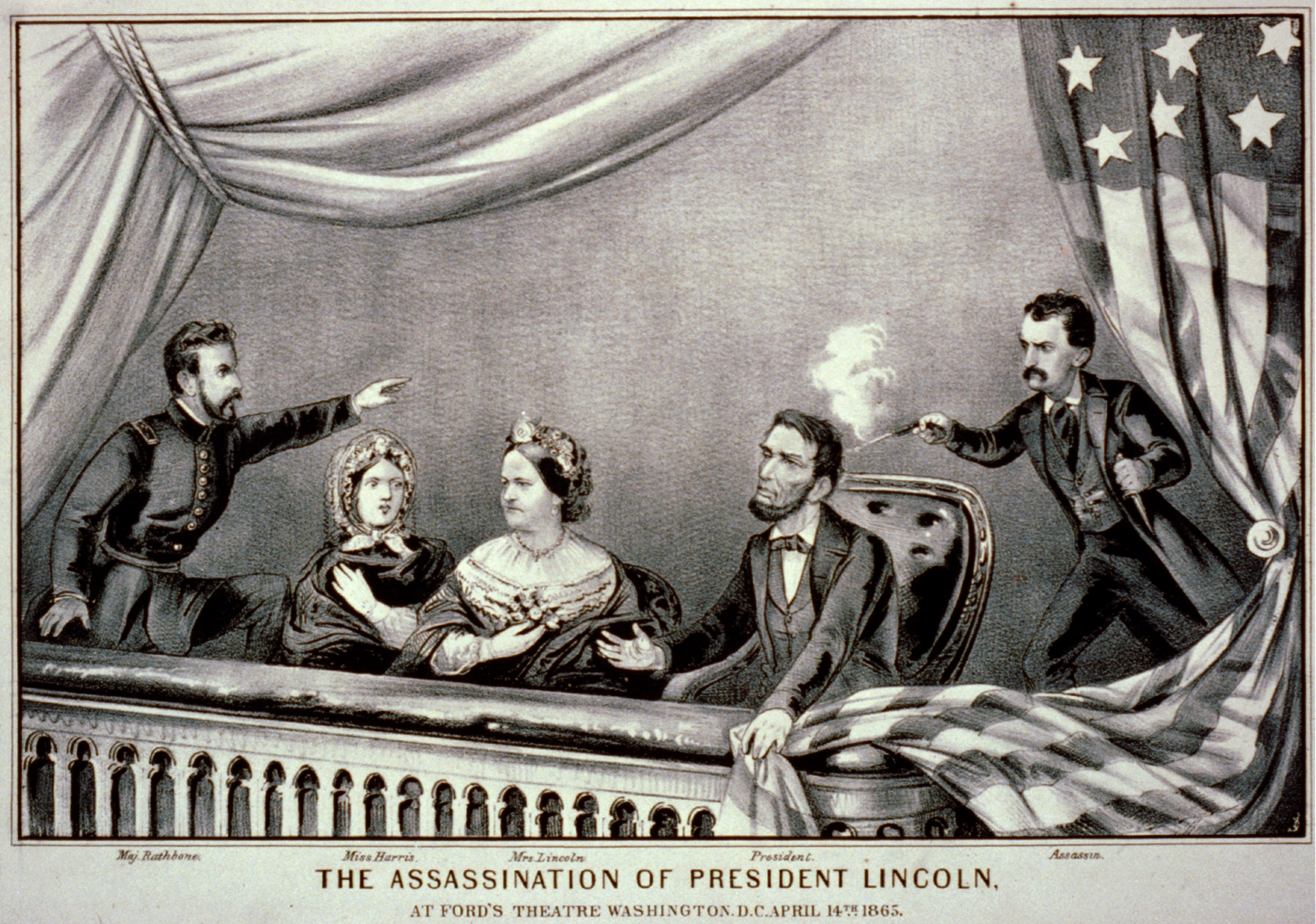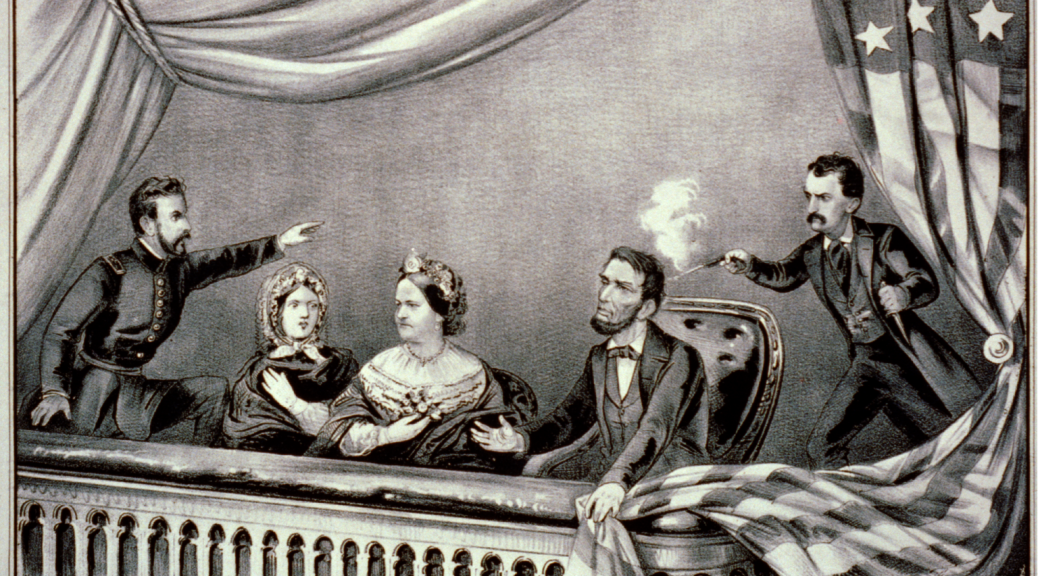President Obama and his daughters attended the July 18, 2015, performance of Hamilton on Broadway. His wife, Michelle, had seen it off-Broadway at the Public Theatre. Former president Bill Clinton and his wife, presidential candidate Hillary Clinton, also caught an off-Broadway performance of Lin-Manuel Miranda’s celebrated show about the Founding Fathers. Miranda first performed songs from the show way back in 2009 to Obama, and he sat next to the President during last week’s performance at the Richard Rodgers Theatre.
Many of my friends worked on the show (Jay Duckworth even has an article on how the props shop made 160 turned candlesticks). It made me wonder about the theatre habits of other Presidents. Turns out, the American Presidency has long had a rich involvement with the theatre. Thanks to the book American Presidents Attend the Theatre by Thomas Bogar and a few hours of Googling, I’ve dug up a few interesting stories.
Washington was an avid theatre fan. Though Congress banned theatre during the Revolutionary War, Washington produced plays at Valley Forge to keep his troops from deserting. He was one of the subscribers of the first play published and professionally produced by an American author, The Contrast, by Royall Tyler. He had his own presidential box at the John Street Theatre in New York, and attended his first show as President a mere 11 days after his inauguration. He often brought guests, including Alexander Hamilton.

Van Buren was another President with a great love of the theatre, and attended many shows at the National Theatre in Washington, DC. He watched many performances by the famed actor Junius Brutus Booth (father to Edwin and John Wilkes). The admiration was not mutual; Booth publicly detested Van Buren, and once hid in the fly loft over the stage, bellowing that he would not come out until Andrew Jackson returned to the White House (Andrew Jackson was the subject of another musical which debuted at The Public Theater). Van Buren also attended the debut of Edwin Forrest, Booth’s chief rival, at the National.
Forrest, of course, was one of the key figures in the Astor Place Riots in 1849, the other being British actor William Charles Macready. The Riot broke out at the Astor Opera House, which stood half a block from The Public Theatre, where Hamilton played off-Broadway. Connections!
Abraham Lincoln was an avid theatre fan as well, attending many plays, operas, and quoting Shakespeare profusely during his time in office. His youngest son, Tad, was also a theatre fan, and would occasionally sneak on stage in costume while his father watched from the audience.
Lincoln attended several shows at the brand new Ford’s Theatre, where he caught performances by Junius Booth’s son, John Wilkes. Tad also saw a show performed by John Wilkes Booth; the actor presented the President’s son with a rose after the play. Coincidentally, Edwin Booth (John Wilke’s brother) saved the life of Robert Todd Lincoln (the President’s eldest son). In 1864, Lincoln nearly fell off a moving train, but Edwin managed to grab his collar and pull him back on.
Less than a year later, the President was shot by John Wilkes Booth during a performance at Ford’s Theatre.

William Taft was another avid theatre-goer, and was on his way to a show when former President Theodore Roosevelt was shot. Once he knew Roosevelt was okay, he continued with this theatre plans to see Milestones at the Liberty Theatre on W 42nd Street in New York. Secret Service agents filled the orchestra seats and pit to watch the presidential box, a procedure which became routine now that the Service was expanded to permanently protect the President.
During World War II, President Franklin Roosevelt saw only two theatre shows. One was the Broadway production of Irving Berlin’s This is the Army. The cast consisted entirely of active-duty soldiers and was the first racially-integrated unit of the US Army. The head technician on the show was Peter Feller, who won a Tony for Best Stage Technician on another show a few years later (Berlin had worked with Feller’s father on a similar show during World War I, Yip Yip Yaphank). After the performance, Roosevelt went backstage to tell the cast, “I know you think you’re just doing a show and that you feel maybe that you’re not really soldiers, but don’t ever think for one minute that you’re not doing a job. This thing is so important.” The show soon became a film, starring future President Ronald Reagan.
Richard Nixon met his wife when he was cast along side her in a Whittier Community Players production of The Dark Tower. Franklin Roosevelt, Lyndon Johnson, Dwight Eisenhower and Bill Clinton were also actors in high school plays.
Gerald Ford was the first President to see a show at Ford’s Theatre since Lincoln’s assassination. While preparing for his attendance, the Secret Service agent asked the theatre’s artistic director about prior visits by US Presidents. Awkward!
Jimmy Carter was one of the most avid theatre fans to ever sit in the White House. As President, he saw shows at the Kennedy Center more than any other sitting presidents, and he remains the only one to ever attend a play by Eugene O’Neill. In fact, when he saw Anna Christie, he knew the script so well that he noticed when John Lithgow ad libbed a line about “peanuts”, and mentioned it to him backstage after the show.

George Herbert Walker Bush became the first future president to invest money in a Broadway show in 1952. In the mid-50s, George Bush was invited to join a local production of Mister Roberts, but suggested his younger brother, Jonathan. Jonathan was bit by the theatre bug and moved to New York to make it on Broadway. He studied under Stella Adler. He had a lead in the musical Johnny Johnson (“thoroughly distasteful” said the New York Post of Bush) as well as five different versions of Oklahoma! Incidentally, George W Bush attended a performance of Mister Roberts at John F. Kennedy Center in 2005. Must be a popular show in the Bush family.





